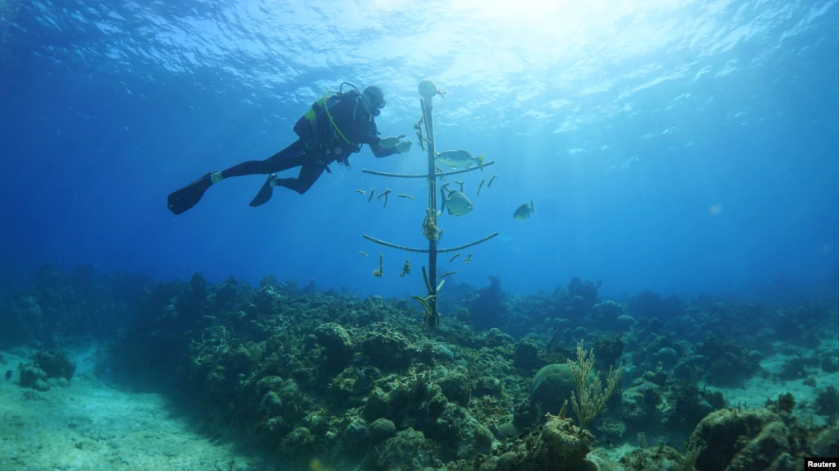A small group of Cuban dive instructors have started a project to grow corals and replant them. The divers hope to restore part of Cuba’s barrier reef. And they are working with limited financial support and using materials recovered from the coast.
Luis Muiño is one of the project’s leaders. The 44-year-old fisherman grew up on Cuba’s north coast. He said he saw his beloved reefs outside the mouth of Matanzas Harbor slowly weaken and the number of fish lessen over the years.
Muiño told Reuters, “It’s incredible the loss of coral in the past 30 years.” He added, “Our dream is to repopulate again the parts of the barrier reef that have lost their corals.”
To make that happen, Muiño worked with other dive instructors and neighborhood schoolchildren with support from Cuba’s National Aquarium and the Cuban environmental program Ecovalor.
They began collecting pieces of coral spread across the ocean floor after large storms three years ago. The pieces were then hung on branches of underwater “trees” made from old plastic pipes and supported by fishing lines recovered from the coast.

Muiño said the pieces grow quickly. They are then “replanted” on the coral reef, attached by nails driven into the rock. In a year, most survive and grow enough to repopulate part of the barrier reef between 60 to 80 meters in length, he said.
“It’s a project that takes time,” said co-worker Michel Soto. He said the project has done better than expectations even with little financial support and limited equipment in Cuba. He commented, “Everything is difficult, but we keep pushing ahead … and we are making progress.”
Like many coral reefs around the world, the ones in Cuba are threatened by changing water temperatures, invasive plants and animals, pollution and over-fishing. The U.S. National Oceanic and Atmospheric Administration (NOAA) says the world has already lost 30 to 50 percent of its coral reefs.
Karine Guillevic is a French diver who just visited Cuba for the first time. She said the reef looked better than others she had seen on dives elsewhere in the world, including in Africa.
“The coral …needs to be protected,” she said after two dives on a recent trip to nearby Varadero. She said, “It’s good to see that in Cuba they take care of what they have, and that it is still not too affected by too much tourism.”
Muiño said a healthy reef and a happy tourist are his real reward. “We do this out of love for the reef,” Muiño added.
I’m Gregory Stachel.
Dave Sherwood reported this story for Reuters. Gregory Stachel adapted it for VOA Learning English.
____________________________________________________________________
Words in This Story
coral – n. a hard material formed on the bottom of the sea by the skeletons of small creatures
reef – n. a long line of rocks or coral or a high area of sand near the surface of the water in the ocean
incredible – adj. difficult or impossible to believe
tourism – n. a tool with many stiff hairs or fibers that is used for cleaning, smoothing, or painting something
We want to hear from you. Write to us in the Comments section, and visit WWW.VOA-STORY.COM
